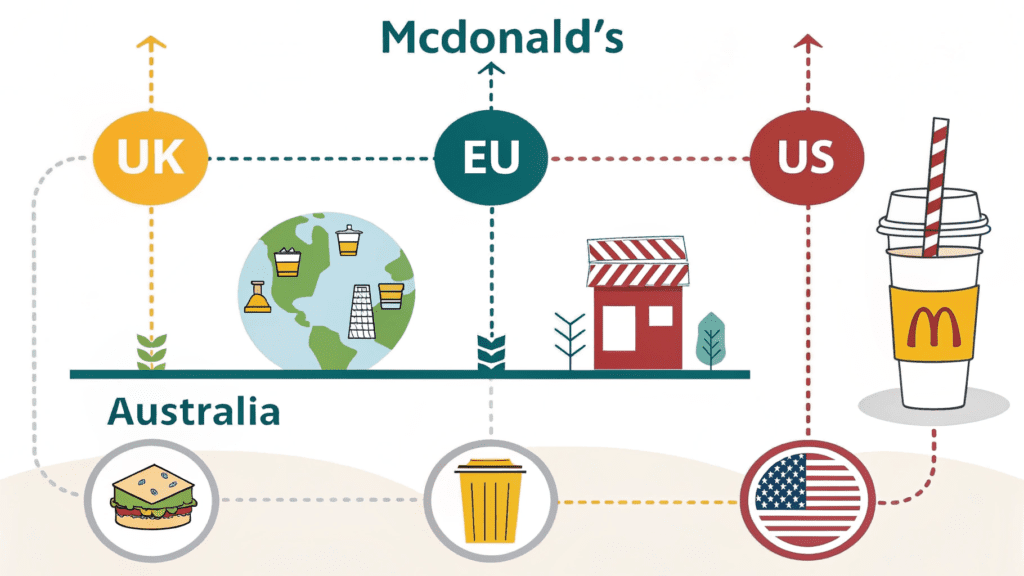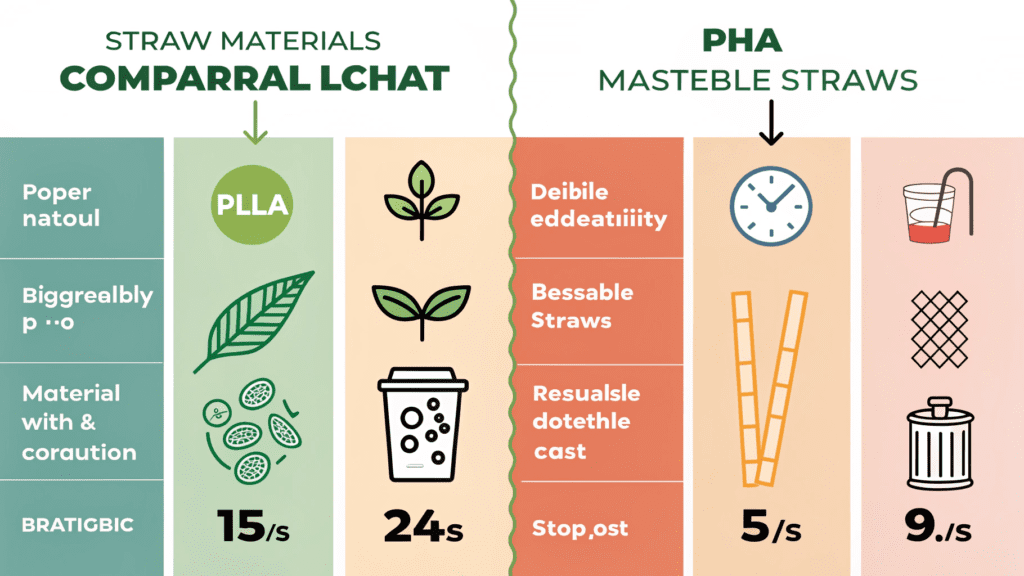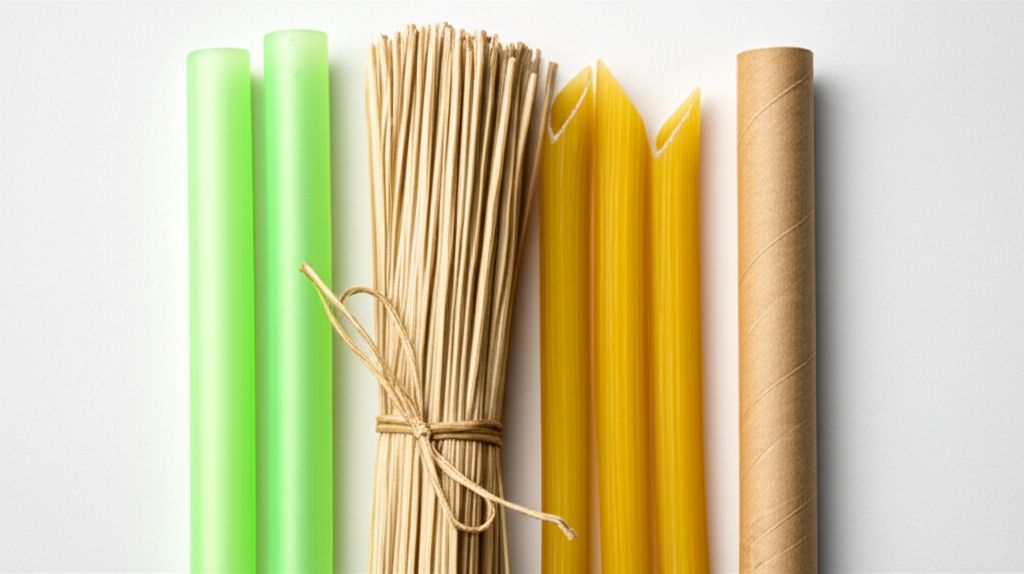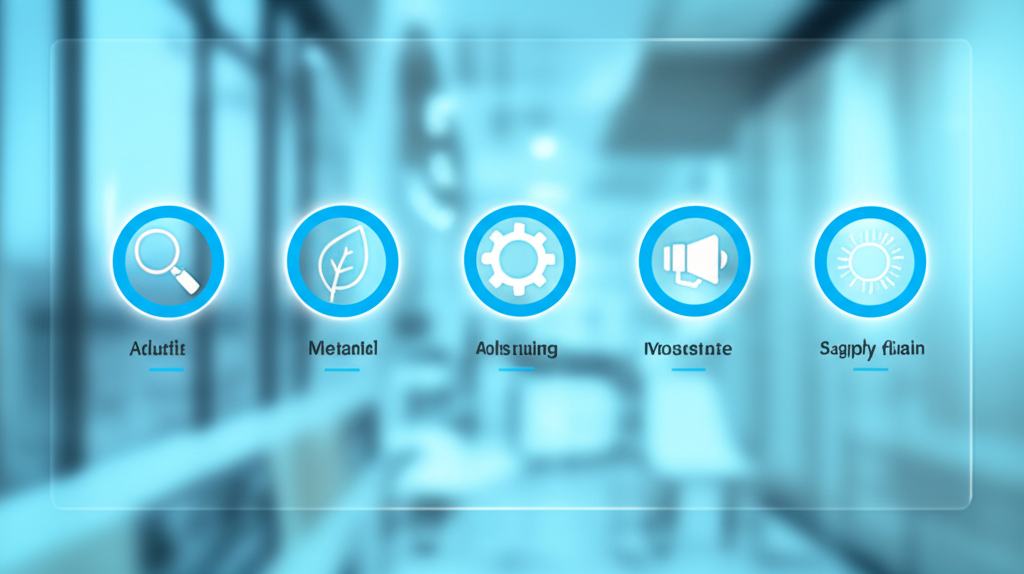
Navigating the Complexities of Eco-Friendly Packaging in QSRs
The imperative for businesses to embrace sustainable practices has shifted from a niche concern to a foundational strategic pillar. Across industries, but particularly within the quick-service restaurant (QSR) and broader food service sectors, the pressure is immense. This pressure stems from multiple fronts: escalating consumer demand for environmentally responsible products, stringent regulatory frameworks targeting single-use plastics, and the undeniable operational and commercial risks associated with inaction. Global giants like McDonald’s, known for their scale and market influence, serve as poignant case studies in this evolving landscape. Their highly publicized transition to paper straws, initially hailed as a monumental stride towards a greener future, has since revealed a complex truth that offers critical lessons for every B2B decision-maker navigating their own sustainability journey. The question “Are McDonald’s paper straws biodegradable?” while seemingly simple, unpacks a much broader narrative about the intricacies of true sustainability.
Ignoring the nuances of eco-friendly packaging can lead to significant repercussions. Beyond the immediate threat of non-compliance fines in increasingly regulated markets, there’s the long-term erosion of brand trust and customer loyalty. Today’s consumers are more informed and discerning; they look beyond surface-level “green” claims, demanding tangible environmental benefits. Failing to meet these expectations, or worse, engaging in perceived “greenwashing,” can severely impact market share and profitability. Businesses that genuinely integrate sustainability, by contrast, stand to gain a competitive edge, attract new customer segments, and build a resilient, future-proof operation.
From Plastic to Paper: Unpacking McDonald’s Sustainability Saga
Driven by growing public disquiet over plastic pollution and impending governmental mandates, McDonald’s initiated a significant shift away from plastic straws. Beginning in March 2018 with trials in the UK, the company committed to a full transition across all 1,361 restaurants in the UK and Ireland by the end of 2019. This move was a direct response to public petitions, one of which garnered nearly half a million signatures urging the fast-food giant to ditch plastic straws, and followed a proposal by the UK government in April 2018 to ban single-use plastic straws and cotton buds by 2020. Similar initiatives and trials soon followed in other key markets, including Australia, Canada, Belgium, France, Sweden, Norway, and select U.S. markets, all aiming to replace long-lasting plastic with materials perceived as more environmentally benign.

However, this well-intentioned transition quickly unearthed a series of multifaceted challenges, transforming a straightforward material swap into a complex case study in real-world sustainability implementation.
The “biodegradable” nuance became a central point of contention. While paper straws are, by their very nature, designed to decompose naturally, their practical recyclability proved to be a formidable hurdle. McDonald’s paper straws, particularly the thicker, more durable versions rolled out in response to customer complaints about sogginess, posed difficulties for existing waste management infrastructure. In August 2019, it was revealed that despite being made from recyclable materials, the straws were too thick to be processed efficiently by their recycling partners in the UK and Ireland. This led to a critical revelation: McDonald’s advised customers in some regions to dispose of the paper straws in general waste. While the company clarified that this general waste was then used for energy generation rather than sent to landfills, the public outcry was swift. Critics levied accusations of “greenwashing,” pointing out the irony of a supposedly eco-friendly product ending up in incineration rather than being recycled as widely assumed. This highlights a crucial gap between a material’s inherent recyclability and the actual infrastructure available for its processing. Understanding the nuances of this transition is vital for any business. For a deeper dive into one of the most visible changes in the fast-food industry, explore our analysis ofdecoding McDonald’s straw strategy.

Beyond the recycling conundrum, customer experience and brand perception suffered significantly. Numerous complaints surfaced, with consumers lamenting that the paper straws became soggy and disintegrated quickly, especially in thicker beverages like milkshakes, making them difficult or even impossible to use. Some customers reported that the paper straws altered the taste and feel of their drinks, negatively impacting their overall enjoyment. This widespread dissatisfaction fueled online petitions calling for the return of plastic straws, one of which garnered over 51,000 signatures. McDonald’s responded by introducing an “evolved,” stronger paper straw across Europe in November 2019, and in Australia, they later confirmed a 30% increase in thickness for their paper straws. Yet, even these improvements couldn’t fully mitigate the negative sentiment. This case study underscores the critical balance businesses must strike between environmental goals, product functionality, and customer satisfaction, especially when implementing changes at a global scale.
Crafting a Greener Future: Strategic Solutions for Food Service Packaging
The complexities encountered by an industry leader like McDonald’s offer invaluable lessons for any business aiming to implement truly sustainable packaging solutions. The market for eco-friendly alternatives is not just growing; it’s rapidly evolving, driven by ongoing innovation, burgeoning consumer demand, and increasingly stringent legislative pressures worldwide. The global eco-friendly straws market, for instance, is projected to surge from approximately USD 12.3 billion in 2025 to nearly USD 25.1 billion by 2035, at a compound annual growth rate (CAGR) of 7.3%. This robust growth underscores the irreversible shift towards more sustainable practices.

Comparison of Sustainable Straw Technologies: A B2B Perspective
Choosing the optimal sustainable straw solution involves more than a simple material swap. It demands a thorough evaluation of performance, cost implications, and end-of-life solutions that align with your specific operational environment and target market. Businesses must consider factors beyond initial price, including regulatory compliance, supply chain stability, and the overall impact on customer experience and brand loyalty. For a broader understanding of material properties, consult our guide onbiodegradable straw materials.
| Straw Material | Key Characteristics | Biodegradability/Compostability | Durability/Use Case | Cost Implications | Infrastructure Need |
|---|---|---|---|---|---|
| Paperipillit | Made from wood pulp, often coated. Virgin kraft paper popular for strength. | Biodegradable; often commercially compostable. | Variable; prone to sogginess. Improved coatings enhance resistance. Suitable for most cold drinks. | Kohtuullinen | General waste (often incinerated), or specific industrial composting if coated. Difficult for standard recycling facilities due to thickness. |
| PHA-pillit | Bioplastic from renewable resources (cornstarch, sugarcane). Mimics traditional plastic. | Biodegrades in various environments, including marine and soil. | High; similar feel and durability to plastic. Excellent for hot/cold beverages. | High | Industrial composting; natural decomposition in diverse environments. |
| PLA pillit | Bioplastic from fermented plant starch (corn). | Requires commercial composting facilities. | Good; similar to plastic. Not ideal for very hot liquids. | Kohtuullinen | Industrial composting facilities are essential for proper disposal. |
| Sugarcane (Bagasse) Straws | Made from sugarcane waste byproduct. | Biodegradable; often home compostable. | Good; sturdy in both hot and cold drinks. Water-resistant. | Kohtuullinen | Home or industrial composting, minimal infrastructure needed. |
| Hay Straws | Natural wheat stems. | Readily compostable. | Good, sturdy for cold beverages. | Low | Composting. Limited use cases due to natural variations. |
| Pasta pillit | Edible, typically wheat-based. | Edible, biodegradable, truly zero-waste. | Short-term use (approx. 1 hour in cold drinks); not for hot. Allergen concern (gluten). | Low | Edible/Compostable. |
| Seaweed-Based Straws | Emerging technology from seaweed. | Marine-safe, fully biodegradable. Dissolves harmlessly in nature. | Durable for hot & cold liquids; doesn’t affect taste. | High (emerging) | Natural decomposition/composting. Future-proof solution. |
| Reusable (Metal, Glass, Silicone) | Durable, multi-use, washable. | N/A (Reusable, not disposable) | Very high durability, long lifespan. | High initial, very low long-term per-use cost. | Requires robust cleaning, collection, and sanitation infrastructure. Generally not suitable for high-volume fast-food due to logistics and breakage risks. |
Industry Trends & The Future of Eco-Friendly Packaging
The industry’s pivot towards sustainable straws is not an isolated phenomenon but an integral part of a broader, transformative shift in global packaging. This evolution is defined by a commitment to circular economy principles and a proactive approach to environmental stewardship.
- Market Growth & Regulatory Tailwinds: The significant market growth projected for eco-friendly straws is fueled directly by escalating plastic bans and restrictions. Regions like the European Union, various US states (e.g., California, New York, Washington), and the UK are actively mandating green manufacturing practices and waste reduction, compelling businesses to adapt or face penalties. Businesses that proactively embrace these changes can secure a first-mover advantage and future-proof their operations against tightening regulations.
- The Power of Consumer Preference: Modern consumers are a powerful force driving this change. A 2023 NielsenIQ survey revealed that 69% of fast-food customers noticed eco-packaging changes, with 58% stating that such packaging influenced their restaurant choice. Furthermore, 44% of consumers expressed willingness to pay an additional 5-10% for meals served with compostable or biodegradable packaging. This translates directly into enhanced brand reputation, increased customer loyalty, and potentially, greater market share for businesses that authentically commit to sustainability.
- Innovation Addressing Key Challenges: The challenges faced by early sustainable alternatives, such as the sogginess of paper straws or the cost of bioplastics, are being aggressively addressed by manufacturers. Innovations include developing advanced, plant-based coatings for paper straws to improve moisture resistance without compromising biodegradability. The emergence of Polyhydroxyalkanoate (PHA) straws, which mimic conventional plastic in feel and performance while offering superior biodegradability in diverse environments (including marine and soil), signifies a major leap forward. Edible straws, available in various flavors and already adopted by clients like Disney, offer a truly zero-waste solution. For a comprehensive guide on responsible waste management, including the disposal of compostable items, refer to our article on compostable straw disposal.
- Building a Circular Economy: Beyond individual material solutions, the industry is increasingly focused on establishing a circular economy. This involves not only selecting sustainable materials but also proactively improving recycling and composting infrastructure, fostering collaboration with waste management providers, and exploring closed-loop systems. McDonald’s, for example, is investing in partnerships like The Recycling Partnership’s Polypropylene Recycling Coalition to boost the recyclability of challenging materials. Companies are also implementing strategies like offering straws only upon request and piloting “strawless lids” to reduce consumption at the source, demonstrating a holistic approach to waste reduction. The future lies in solutions that are not merely “biodegradable” in theory, but genuinely manageable within existing or evolving waste streams, ensuring that sustainability efforts translate into tangible environmental benefits.
Your Roadmap to Sustainable Success: Implementing Responsible Packaging
For quick-service restaurants, cafes, hospitality groups, and any food service business, transitioning to truly sustainable straws and packaging requires a strategic, holistic approach that extends far beyond mere compliance. It’s an opportunity to redefine your brand, optimize operations, and secure a competitive advantage in a rapidly evolving market.

- Conduct a Comprehensive Packaging Audit: Begin by meticulously evaluating your current packaging portfolio. Identify all single-use plastic dependencies and assess their environmental footprint, associated costs (including waste disposal), and impact on customer experience. Critically, understand the specific disposal and recycling infrastructure available in each of your operating regions, as this dictates the viability of different material choices.
- Prioritize Material Selection Based on Lifecycle: Avoid the “paper is always better” trap. Instead, consider the full lifecycle of alternative materials: raw material sourcing, manufacturing energy consumption, transportation emissions, and crucially, their end-of-life scenarios (true recyclability, industrial or home compostability, or degradation). Balance theoretical biodegradability with practical functionality – will a paper straw withstand a thick milkshake, for example? – and the capabilities of your local waste management partners.
- Invest in Infrastructure & Partnerships: The McDonald’s case highlights the critical gap in waste infrastructure. Proactively engage with your waste management providers to understand their capabilities for processing new, sustainable materials. Explore and invest in partnerships that support closed-loop systems, upcycling initiatives, or industrial composting where available. Become an advocate for improved local and regional infrastructure.
- Engage with Your Supply Chain: Collaborate closely with packaging suppliers who are genuinely committed to innovation and sustainability. Demand transparency regarding certifications (e.g., FSC for paper, ASTM D6400 for compostables, marine biodegradability certifications) and the environmental claims of their products. A strong supply chain partnership is vital for sourcing cost-effective and truly sustainable materials.
- Educate Your Staff and Customers: Transparency is paramount. Clearly communicate your sustainability goals, the reasons behind packaging changes, and the environmental benefits you aim to achieve. Provide unambiguous instructions for proper disposal at the point of consumption to maximize the effectiveness of your efforts. Comprehensive staff training ensures consistent implementation and helps them answer customer questions confidently.
- Measure and Iterate: Sustainability is an ongoing journey. Establish clear metrics to track the environmental impact of your changes (e.g., plastic reduction, waste diversion rates), monitor customer feedback, and analyze operational efficiency. Be prepared to adapt and iterate your strategy as new technologies emerge, waste infrastructures evolve, and consumer expectations shift.
By learning from the experiences of industry leaders, embracing strategic insights, and committing to a holistic approach, your business can move beyond superficial green initiatives. You can implement solutions that truly contribute to a more sustainable future, significantly enhance brand value, mitigate regulatory risks, and resonate deeply with today’s environmentally conscious consumer, ultimately securing a greater share of an increasingly green market.
Usein Kysytyt Kysymykset
Q1: Are McDonald’s paper straws truly biodegradable?
A1: Yes, McDonald’s paper straws are considered biodegradable because they are made of paper and will naturally decompose. However, their thickness makes them difficult for standard recycling facilities to process, leading to the company’s advice to dispose of them in general waste.
Q2: Why are McDonald’s paper straws not easily recyclable despite being made of paper?
A2: The primary reason is the straws’ increased thickness. McDonald’s reinforced the paper straws after complaints about earlier versions dissolving. This thicker construction challenges existing recycling systems that are set up for standard paper grades.
Q3: What happens to McDonald’s paper straws when disposed of in general waste?
A3: McDonald’s indicates that general waste from its restaurants, including paper straws, is routed to energy-from-waste facilities rather than landfilled in some markets.
Q4: What are the main criticisms of McDonald’s paper straws from customers?
A4: Common complaints include sogginess or disintegration (especially with thick shakes), altered taste or mouthfeel, and the perception that multiple straws may be needed for a single drink.
Q5: What are some alternative sustainable straw materials available for businesses?
A5: Viable options include:
- Sokeriruoko -bagasse (sturdy, compostable; check certifications like BPI/TÜV AUSTRIA).
- PHA bioplastic (plant-based; designed to biodegrade in more environments than PLA).
- Reed / wheat stems / bamboo (natural fibers; home-compostable, rustic aesthetic).
- Rice/tapioca “edible” straws (true zero-waste if consumed; flavor-neutral or flavored).
- Reusable stainless steel, glass, or silicone (best for dine-in with robust cleaning SOPs).
When sourcing, prioritize PFAS-free claims for paper/fiber products and verify food-contact documentation (e.g., FDA/LFGB) plus compostability standards (BPI, CMA, EN 13432).






